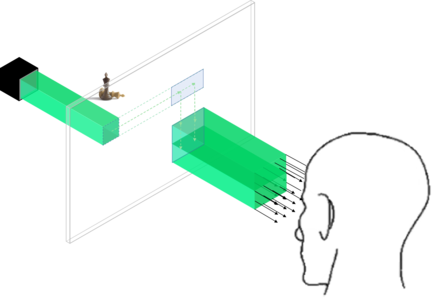3D Holographic AR and VR Displays
Published:
Modern augmented and virtual reality systems such as Oculus VR, Magic Leap and HoloLens products are fundamentally unfit for purpose because they use 2D projection which leads to eye fatigue and a lack of immersive experience for the user. Holography is the only way to produce truly 3D images, and could therefore emerge as the leading technology for such display systems. Historically to have large field-of-view holographic displays, engineers had to use either smaller spatial light modulators or telescope de-magnification techniques. This resulted in uncomfortably small and often impractical display sizes. In collaboration with the University of Cambridge and holographic display company VividQ, this project saw the development of a system capable of expanding the eyebox without compromising on display size, signficantly improving the usability and quality of 3D holographic displays.







